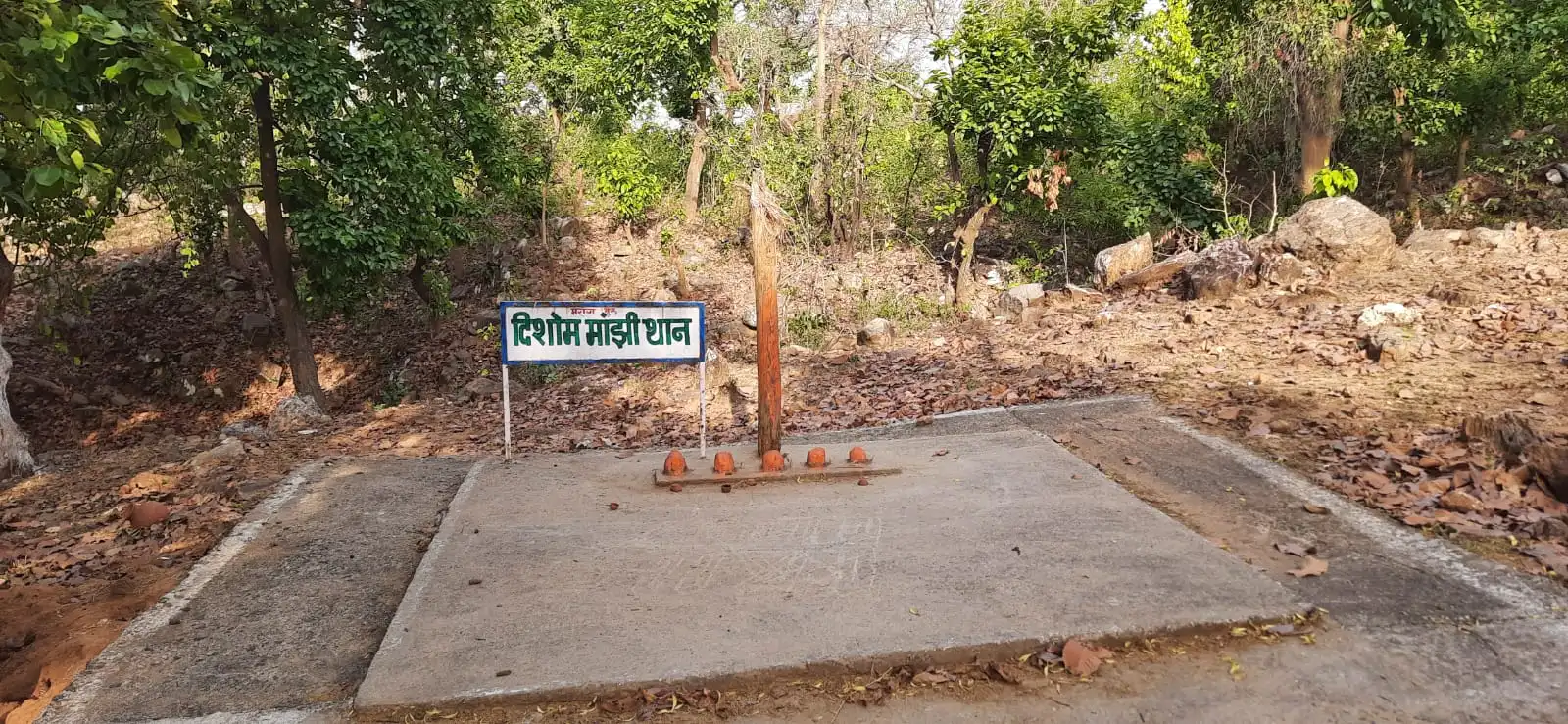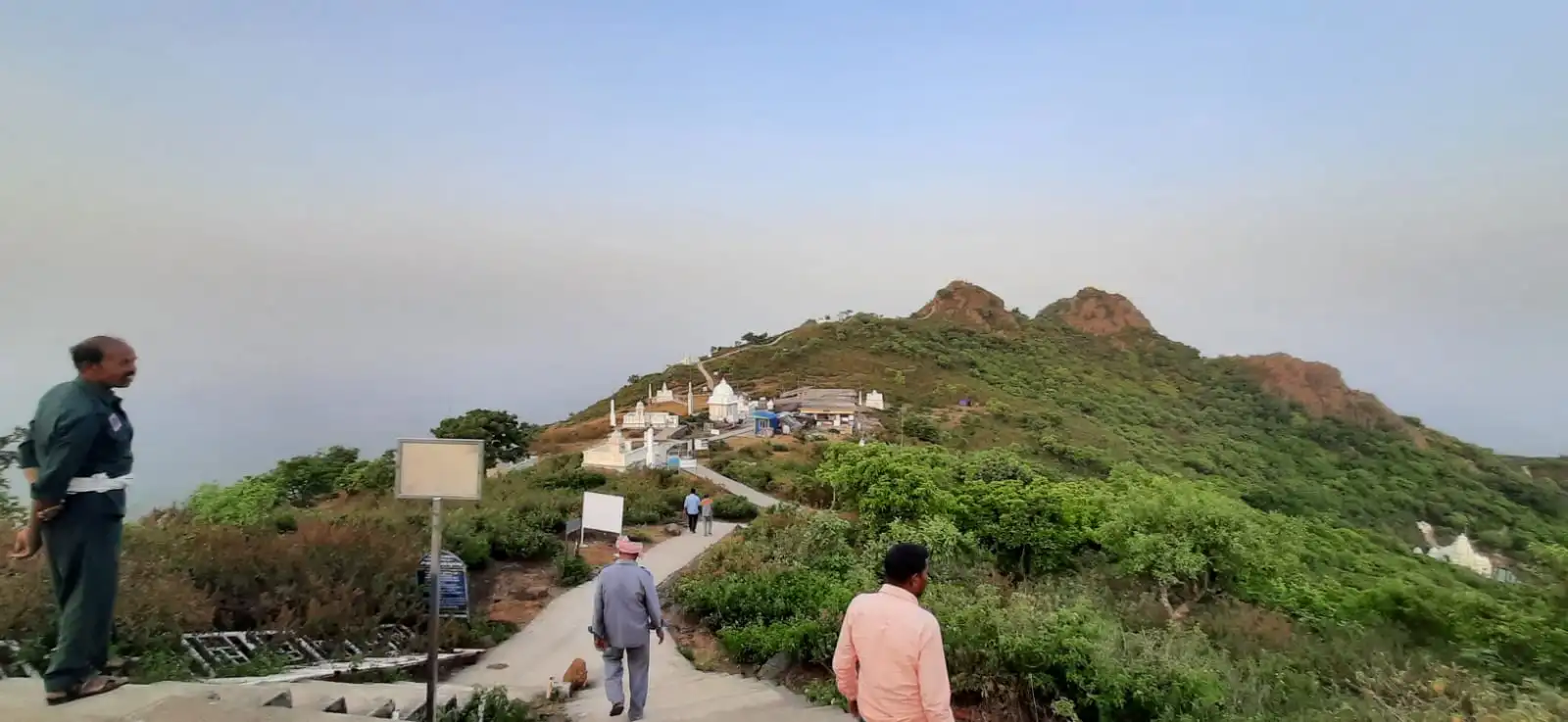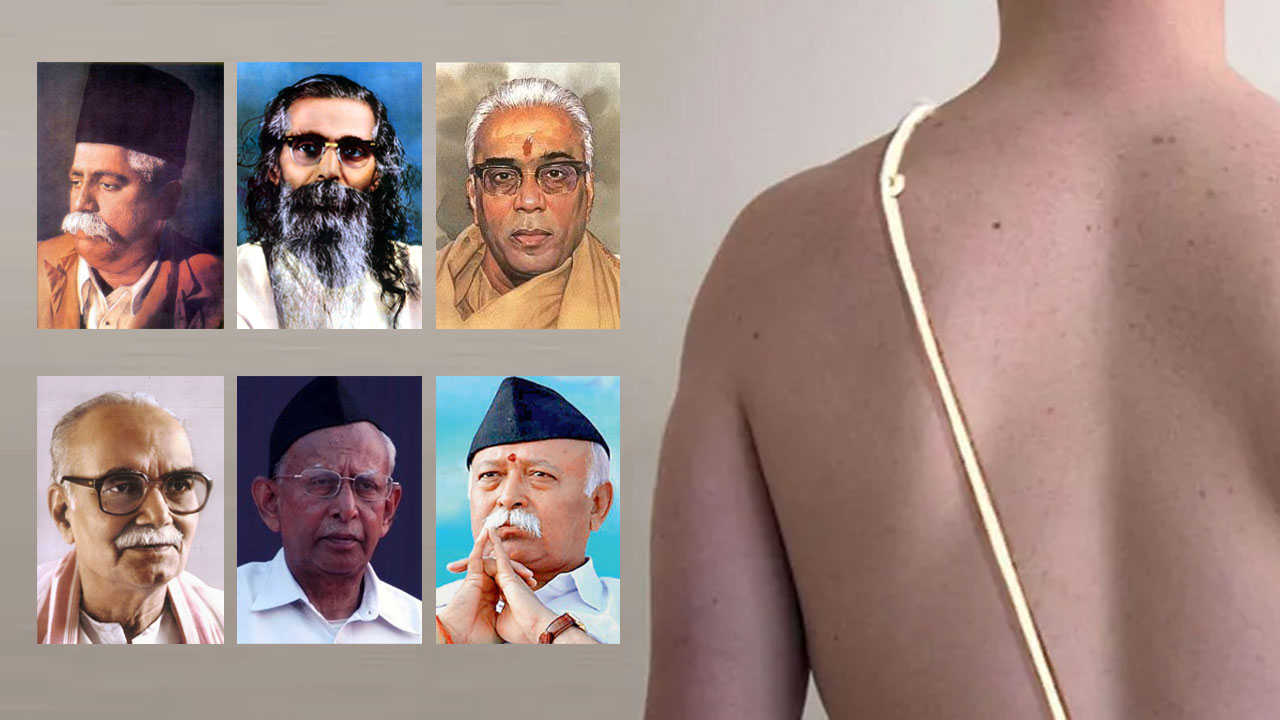This time, my trip to Jharkhand was a bit longer than usual. I had decided beforehand that I would not return until I had set foot in each district of the state. I began with Giridih, where Parasnath, one of the most sacred shrines of the Jain community, is located. Parasnath’s history is said to go back 1,775 years. Parasnath, the 23rd Jain Tirthankar, had breathed his last and was buried at this place. That was how it got its name. The cemeteries of 20 of the 24 Jain Tirthankars are located at Parasnath.
 The Parasnath hills rise up to 4,500 feet above sea level. Many temples at the place are said to be more than 2000 years old. Yet, the residents of the villages around here know nothing about the Parasnath hills. If you ask any local Adivasi about Parasnath, he will take you to the Parasnath cemetery but never refer to the hills as Parasnath. The word Parasnath has no place in the history of the local Adivasis. For them, the hills are known as Marang Buru.
The Parasnath hills rise up to 4,500 feet above sea level. Many temples at the place are said to be more than 2000 years old. Yet, the residents of the villages around here know nothing about the Parasnath hills. If you ask any local Adivasi about Parasnath, he will take you to the Parasnath cemetery but never refer to the hills as Parasnath. The word Parasnath has no place in the history of the local Adivasis. For them, the hills are known as Marang Buru.
Who is Marang Buru?
Marang Buru literally means an elderly person. Marang Buru is the eldest and the most respected person for the Adivasis. They believe that it is because of Marang Buru that they are able to earn their livelihood. The Adivasis living on Parasnath hills and nearby areas know Parasnath hills as Marang Buru. Very few people know about an Adivasi temple nestled in the Parasnath hills. According to the Gazetteer of Bihar (Hazaribagh district, 1932), this range was known as Marang Buru. During the Sarhul festival, rituals were carried out here. The hills were also the hunting ground of the Adivasis. But all that stopped with the growing dominance of the Jain community.
The Jains have been using this place for a long time. Huge buildings, temples and ashrams are being built on the hills. But the Adivasis have only suffered because of this.

Ignored in their own land
The Fifth and the Sixth Schedules of the Constitution prohibit non-Adivasis from purchasing land owned by the Adivasis. But in this region, members of the Jain community are buying land from the Adivasis with impunity to build grand ashrams. The Adivasis are assured that in return for parting with their land, they would get jobs and health and educational facilities. Initially, some facilities are given. But once these institutions strike roots, the facilities are withdrawn.
These ashrams have borewells and mercilessly exploit the underground sources of water. Dirty water is dumped into a nearby river. Clearly, those running these ashrams don’t care about the Adivasis and their land.
Outsiders dominating Adivasi culture
As you approach Parasnath, you begin to see many government signboards welcoming you to the Jain centre of pilgrimage. The state government, apparently, is very serious about promoting Jain tourism. There are many shops in the area but only a few are owned by Adivasis.

As you climb up the Parasnath hills, signboards issue warning: “This is a sacred place. Consumption of meat, fish and liquor and smoking is strictly prohibited.” Such restrictions are not unusual in our country but one should keep in mind the fact that the land on which Parasnath stands belongs to the Adivasis and animal sacrifice is an integral part of their culture. However, the Jains, who are outsiders, are dominant here. They control the land, the natural wealth and even the culture of this area. The Adivasis, who are the original residents of this area, have been pushed back. On the way to the shrine, you can find many Adivasis begging for alms. It is for the first time that I have seen Adivasis begging. They own the land and the forests of the area but still they are forced to beg.
Inhuman behaviour with doli carriers
Doli carriers have been working here for a long time. Reaching the summit of the Parasnath Hills involves a walk of about 9 km. Then, you need to walk another 9 km to visit all the temples. Finally, there is a 9-km walk down the hills. That is a total distance of 27 km. Dolis (sort of palanquins) are used by pilgrims to cover the distance. The wages of the Doli carriers are fixed and they barely earn Rs 1000 in a fortnight.
Despite the hard work involved in carrying a person for 27 km, there is no arrangement for providing meals or drinking water for them. There are no midway stops where they can rest for a while or toilets. No one is ready to listen to the problems of the Doli carriers – neither the government nor an organization. You may find them sleeping on roadsides. They have to trudge up and down in hot, cold and wet weather.
Jharkhand government’s attitude disappointing
What is most disappointing is that the Adivasi government of Jharkhand is ignoring its own people. It does not take action even when acres of land of the Adivasis are encroached upon. The Jain institutions have not fulfilled their promise of starting schools, hospitals, etc. The government has not taken any action against them. Sometimes, the Adivasis have to furnish documents to prove their ownership of the land – as if they are the outsiders. To sum up, the life of the Adivasis here is worse than in Bastar.
(Translation: Amrish Herdenia; copy-editing: Anil)
Forward Press also publishes books on Bahujan issues. Forward Press Books sheds light on the widespread problems as well as the finer aspects of Bahujan (Dalit, OBC, Adivasi, Nomadic, Pasmanda) society, culture, literature and politics. Contact us for a list of FP Books’ titles and to order. Mobile: +917827427311, Email: info@forwardmagazine.in)
The titles from Forward Press Books are also available on Kindle and these e-books cost less than their print versions. Browse and buy:
The Case for Bahujan Literature
Dalit Panthers: An Authoritative History






